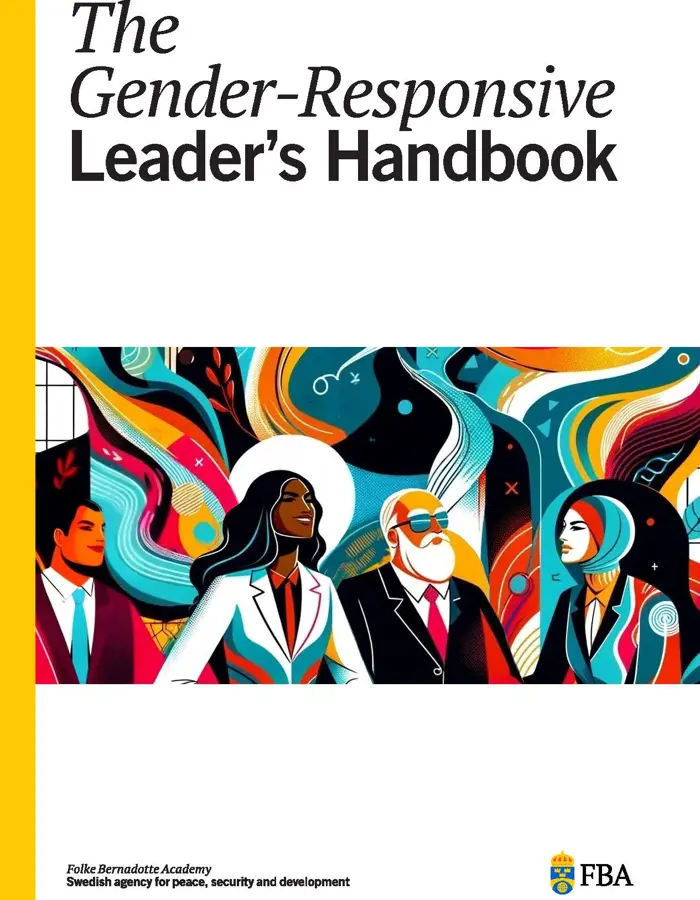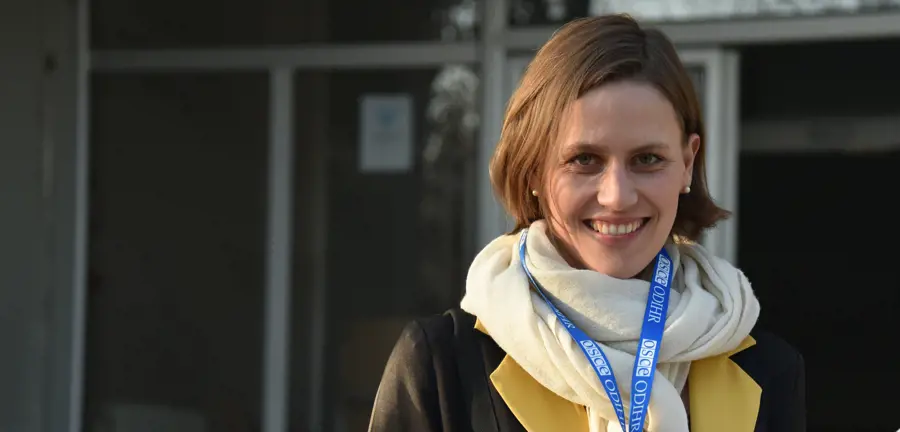Ukraine's Critical Journey: Effective Veteran Reintegration
More than a million Ukrainian women and men have so far participated in the defense against Russia's full-scale invasion of the country, and the number is expected to rise. The sustainable reintegration into civilian life of both current and future veterans is vital for Ukraine's stability and reconstruction going forward.Since Russia’s illegal annexation of Crimea in 2014 and its full-scale invasion in 2022, Ukraine's veteran population has grown to approximately 1.2 million. This number is projected to increase, potentially reaching up to five million concerned by national veteran policy when the war ends, according to the Ministry of Veterans’ Affairs of Ukraine. The sustainable reintegration of these veterans into civilian life is not only a post-war concern but also a pressing issue during the ongoing conflict.
Larysa Hlynchak, a veteran recently discharged after eight years in the Ukrainian armed forces, describes the transition back to civilian life as a period of shock and despair.
– It's tough returning to civilian life after long military service. You almost feel like a newborn, having to learn everything anew. Getting support and guidance during this time is therefore crucial, says Larysa.
In Pavlohrad, central-east Ukraine, she is embarking on a new path as a “Veteran's assistant”, a position created as part of a pilot project by Ukraine's Ministry of Veterans' Affairs. This role, rooted in peer-to-peer support, was initiated following a government decree in June. Her personal experience with the transition motivates her to assist other veterans and their families, including relatives of fallen soldiers.
– Veterans have a responsibility to reintegrate and contribute to community life. But, as I have come to understand, it’s equally important for communities to acknowledge what veterans have gone through, including facing life-threatening situations and the loss of friends. Mutual efforts from both veterans and community members are required, states Larysa.
She recently participated in a workshop organized by the Folke Bernadotte Academy (FBA) and the United Nations Development Programme (UNDP), aimed at equipping Ukrainian practitioners and decision-makers with the necessary insights and tools for effective veteran reintegration.
Enhancing Veterans' Reintegration through a Community-Based Approach
The workshop, conducted in Truskavets in western Ukraine’s Lviv Oblast, focused on Community-Based Reintegration (CBR), drawing upon global experiences and practices. It emphasized the vital role of communities in supporting veterans' transitions to civilian life and covered various aspects, such as exploring CBR’s relevance to the Ukrainian context and applicability in local communities.
Over 30 participants engaged in discussions on aligning national policies, local initiatives, and identifying the specific needs of diverse veteran groups.
In Mykolaiv, the development of a new program for defenders and their family members is underway, as noted by Yevloieva Nataliia, a local government representative from Mykolaiv city council. Reflecting on the workshop's take-aways, she remarks:
– The training made it clear that we need to address some critical oversights, such as supporting not only those who served at the frontlines and their families, but also to increase the focus on the families of those who were killed or have disappeared. It's also essential to recognize veterans who are without official status.
To better address the broader reintegration needs, she plans to propose additional components to Mykolaiv’s draft program.
Mariia Syrtsova, a chief specialist at the Ministry of Veterans Affairs of Ukraine, emphasizes the importance of community-driven systems for veteran integration at the national level:
– The forum was an eye-opener for me; it revealed our communities' strong capability to develop their own systems for veteran integration. It's clear that we must not only include but also rely on these community-driven systems at the national level for forming an effective veteran response.
Ruslan Serhiichuk, a representative of a local civil society organization from Dnipropetrovsk region in central part of Ukraine, and a veteran himself, highlights the importance of recognizing and valuing the role of veterans in society.
– Veterans, both male and female, should neither be placed on a pedestal nor seen as a burden; they are integral parts of our communities, with their own challenges but also unique capabilities to improve community life. Using state-provided resources, veterans can spearhead initiatives like youth centres, benefiting the entire community, and thereby contribute to community strength and development.
Balancing Individual and Community Efforts in Veteran Reintegration
Under Sweden's Strategy for reconstruction and reform cooperation with Ukraine 2023–2027, FBA plays an active role in facilitating veteran reintegration. This involves addressing veterans' immediate needs and preparing the societal groundwork for their return.
– Supporting and reintegrating the vast number of veterans, set to become one of Ukraine's largest population groups, is crucial for the nation's socio-economic revival and stability, says Eric Mellado Åhlin, Disarmament, Demobilization, and Reintegration (DDR) Officer at FBA.
Veterans in Ukraine are currently estimated to constitute about 10 percent of the country's workforce – a figure that could increase significantly depending on the duration of the war, mobilisation patters, and migration. This underscores the specific importance of their integration into the labour market.
– Substantial workforce deficit and potential impacts on the country's social cohesion may be the outcome if these individuals are unable to sustainably transition back to civilian life, says Eric
He emphasizes the need for an effective and inclusive reintegration strategy, balancing individual benefits and assistance – such as mental health support, medical care, and job retraining – with community-based efforts to veterans’ reintegration. These efforts could include measures to stimulate local economies where veterans – alongside others – seek employment, initiatives to reduce potential stigmatization of veterans, and efforts to strengthen social cohesion in communities where veterans are reintegrating. The support to veterans based on their status as community members, rather than as veterans per se, is paramount to this approach.
– As Ukraine continues its efforts for recovery and stability, the reintegration of veterans remains a cornerstone of its journey. Developing policies and practices that resonate with the needs of veterans and their communities will significantly shape the future fabric of Ukrainian society, says Eric.
VETERAN FACTS
- A veteran linked to the conflict with Russia is, according to Ukrainian law, a “person who has participated in the Russian-Ukrainian war and obtained the status of a participant in military operations” and is currently estimated to be around 1,200,000 people.
- According to projections of the Ministry of Veterans’ Affairs of Ukraine, the number of individuals related to Ukraine’s veteran policy could reach up to five million after the end of the war. This estimate encompasses a wide range of veteran categories under national jurisdiction. It includes military personnel, mine clearers, intelligence service staff, customs officials, and extends to veterans and their family members. Additionally, families of deceased combatants and civilians who have suffered disabilities due to the war are also included.
The training workshop titled “Enhancing Veterans' Reintegration in Ukraine through a Community-Based Approach” was held in Truskavets, Lviv Oblast, from November 22-24, 2023. It was organized by the FBA and UNDP in Ukraine with financial support from the European Union under the “EU4Recovery – Empowering Communities in Ukraine (EU4Recovery) project”.








 >
> >
>

